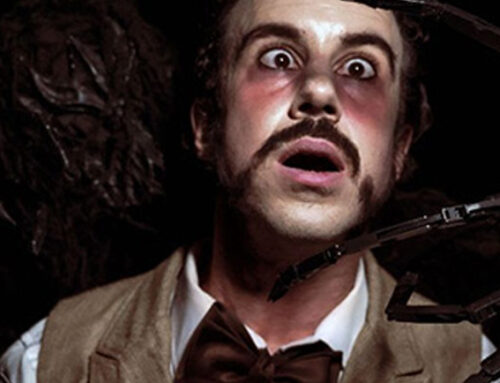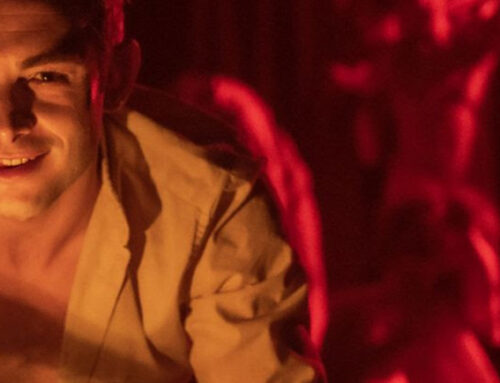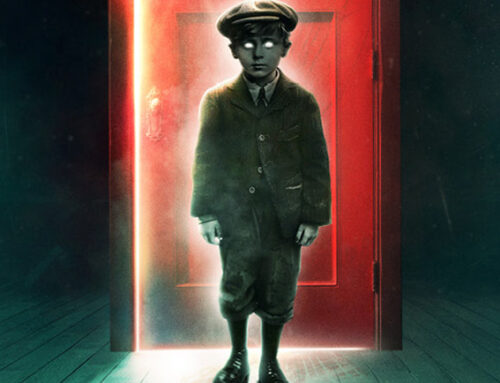A Primer: The Epic of Gilgamesh, often referred to as “He Who Saw the Deep”, is regarded as the earliest surviving work of literature. The story pulled from 11 stone tablets conveys the trails and adventures of Gilgamesh, a part god-part human king. The story meanders through encounters with demons, gods, and other ethereal beings as the hero continues to learn through victory and folly.
For this new immersive staging of the epic tale entitled They Who Saw The Deep, creator-director Derek Spencer abandons literal literary interpretation for a far deeper exploration of the human condition. The staging is actually a strangely comforting, wonderfully engaging piece of art that you would do well to see. For any unfamiliar with the tale of Gilgamesh, the short version is this; Immortality is achieved not from oneself but from the collective whole of what we leave behind. We are not remembered as individuals, but from the contributions, good or bad, that we have made to others.

This staging began as small groups of 3 were lead into a dark stairwell within an unmarked building. A singular hand that belonged to performer Juliet Deem lingered out between the folds of a plastic curtain like a tendril of smoke. Each of us was taken by the hand and lured into the performance space. Deem, portraying one of the many Gilgamesh in the show, offers a story from her childhood. The first space featured a mix of vibrantly colored LED lighting and warm incandescent bulbs, where leaves were strewn across the floor.
We were lead deeper into the journey space and enticed to wander. The central area, a two-story open space from which other rooms branched, invited exploration. In one room, a man (Soren Royer-McHugh) languished on a couch and kept obsessively checking his phone for messages. In another room, we were invited to become part of a meditation of sorts. Off in another room, a live pianist (Dakota Loesch) droned haunting chords and dissonant noises.
The performance space continued to fill as the rest of the audience was led into the space. Soon there were a good thirty audience members wandering through what looked like a Laurie Anderson video. Most of the performers were dressed head to toe in white or a semblance thereof. Random scenes played out passively. In one scene two men develop a secret handshake, perfect it, then their connection is lost with the passage of time and the arrival of a romantic interest for one. Altercations transpire, the actors wander and occasionally engage the audience, and I began to wonder, where the adaptation was going.

The audience was encouraged to explore the multi-level performance space though we were asked not to open any closed doors. This ingenious device was used to gradually open the scope of the stage as the show went on. Areas that were once visible from afar were soon opened for exploration and new scenes played out. Matthew Maguire’s Gilgamesh had a particularly effective scene channeling Rufus Wainwright, playing the piano, offering drinks to guests and violently attempting to forget love lost. Scott Monahan’s Gilgamesh obsessively rambled about friends, friendship, and what a good friend is.
More rooms opened and spaces began to be explored. But what if anything did this have to do with Gilgamesh? Then it hit me. Not the literal adaptation, we explored existence. We explored the transience of mortality and the effect that we as people, have on one another. Breezing about the surreal, inventive set it hit me that my very attendance was, in fact, effecting the experience for others as I politely navigated the labyrinthian stairs and passages.

It must be noted that art director Liam Moore and lighting designer Ian Momii are exhibiting remarkable work with the limited means. The mixed mediums used on set design along with the LED and incandescent lighting, are simply beautiful. Hats off too to Derek Spencer and Meredith Treinen for creating a brave show populated with a fine ensemble that trusts the audience will take the journey.
The show begins as it ends, just like the poem it is based on, with the first lines we heard in the show. Lead again this time out of the space, in small groups, we are given the same lines. He Who Saw the Deep is an impressive piece of minimalist work that gets the participants to look at the lasting effect we have on one another. Loesch’s music is a perfect pairing to the disparate atmosphere.
Things to know before you go
- The show runs approximately 90 minutes. You will be expected to walk and/or stand throughout. We discourage wearing heels.
- The space is not ADA accessible. there are several rooms that have awkward steps or low ceilings. Please be aware of your surroundings.
- There is no public bathroom on site. You will not be able to use the bathroom prior to the performance so please plan accordingly. A staff member can escort you to the private bathroom after the performance.
- Before you arrive, please take a few moments to read and sign the following waiver.
- DO NOT wear white.
He Who Saw the Deep runs now through Sunday May 20th and we suggest you give it a try if you are interested in a very thoughtful, meditative piece of theatre. GRAB TICKETS HERE







